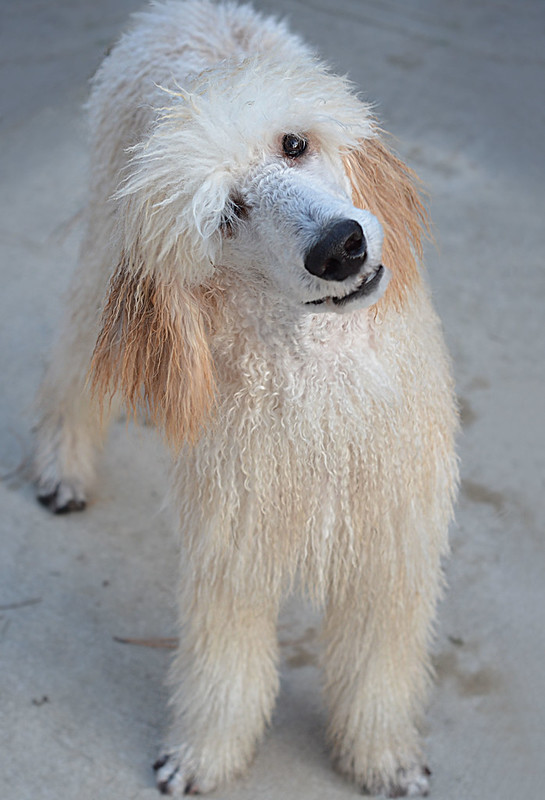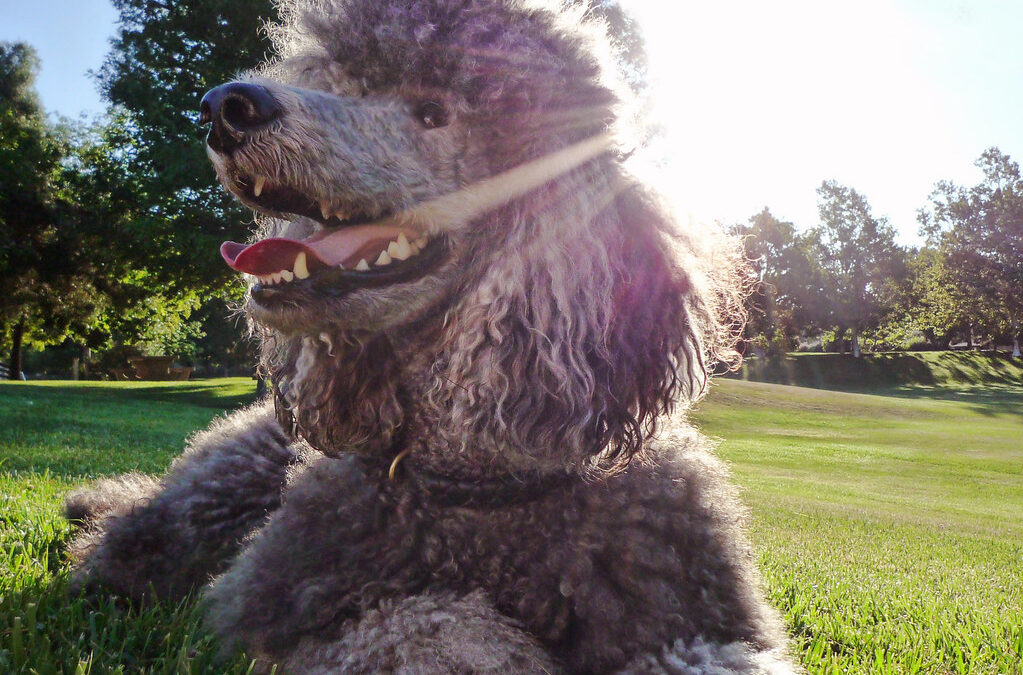Standard Poodle Basic Breed Information
Breed Age: Recognized by the AKC in 1887
Average Height: Over 15″
Average Weight: 60-70lbs for males, 40-50lbs for females
Life Expectancy: 10-18 years
Coat Variations (only including Standard Color): Apricot, Black, Blue, Brown, Café Au Lait, Cream, Gray, Gray & White, Red, Silver, Silver Beige, White
*All breed information comes from the AKC website on Standard Poodles
Standard Poodle Breed History
Despite being the national dog of France, the Standard Poodle actually originated in Germany. According to the AKC, the French refer to the breed as Caniche, or “duck dog”, whereas the breed name Poodle comes from the German word pudelin which means “to splash in the water”, as the Poodle was first bred as water retrievers. They found popularity with the French nobility, which spread to the rest of Europe quickly. Poodles are still one of the most popular breeds in the world according to the AKC.
Fun Fact
Did you know that the fluffy haircuts of the Standard Poodle are actually all about functionality for the breed? Being big and poofy keeps them very warm, but makes them less efficient in the water. However, if all of their hair was removed, they would be freezing within minutes in cold water. The poofy hair cuts mitigate both issues by preserving the fluffy hair near joins and vital organs to ensure the Poodle stays the perfect temperature without being weighed down.
Standard Poodle Strengths
- People-pleasers
- Hypoallergenic coats
- Great hunting and water dogs
- Very active, agile, and good at sports
- Incredibly trainable and eager to learn
- Attentive and loving toward their owners
- Polite with strangers and other animals
- Non-aggressive watchdog
Standard Poodle Weaknesses
- Good grooming habits are a must!
- Very prone to separation anxiety
- Can be timid without early socialization
- Needs more than just basic obedience training – they are highly intelligent and can be bored by a sedentary lifestyle with little interaction from their humans
- Can be hypersensitive to sounds and unexpectedly being touched – some Poodles are not great with children
- Require consistent and thorough exercise daily
- Can be high-strung and even neurotic without proper exercise
- Can be very vocal
6 Common Health Concerns for Standard Poodles:
Click on the name of a health condition to read more. Bring your pup in for regular health screenings to help keep them at their best!
Hip Dysplasia
-
- Hip dysplasia is a common skeletal deformation, usually started by a dog’s genetics and exacerbated by weight, exercise, and nutrition. Hip dysplasia occurs when a dog’s hip joint, normally a ball and socket mechanism, does not develop properly. This causes the grinding of the bones in the joint, and can lead to total loss of function of the dog’s leg. Foods that help temper excessive growth can be helpful for puppies of breeds most at risk for hip dysplasia. Maintaining a healthy weight throughout the dog’s life is also crucial, as extra weight only adds more pressure to the at-risk joints. A veterinarian can also recommend joint supplements as part of a preventative treatment plan.
Eye disorders
-
- Vet Pet Guide says that “the most common Poodle eye problems include tear staining, glaucoma, cataracts, progressive renal atrophy, and optic nerve hypoplasia.” Read more about each of these eye health concerns and how they relate to the Poodle here.
Von Willebrand’s Disease
-
- Another common genetic disorder, Von Willebrand’s disease is characterized by an inability of the blood to clot quickly. This leads to a greatly increased bleeding time for any injury. The only way to diagnose this disease is with a genetic test that can tell if a dog is affected, just a carrier of the trait, or unaffected.
Sebaceous Adenitis
-
- The Orthopedic Foundation for Animals defines Sebaceous Adenitis as, “a hereditary skin disease in which the sebaceous glands become inflamed, often leading to progressive loss of hair.” They continue, “The disease can develop in a wide age range, with age of onset documented as early as 1 year and as late as 12 years. Males and females appear to be affected equally. The exact mode of inheritance is unknown.” The foundation also notes that symptoms and severity may vary by breed.
Bloat
-
- The official term for this health issue is GDV complex, or gastric dilation-volvulus complex. This disease causes the dog’s stomach to fill with air. This rise in pressure cuts off the blood supply returning to the heart, and this reduction in blood volume will send the dog into shock within hours. Watch your pup for a sudden enlargement of their abdomen, coupled with retching, restlessness, excessive salivating, and a tender belly. If you suspect your dog may be at risk for this health condition, please bring them in immediately for a medical evaluation!
Epilepsy
-
- According to Purina Pro Club, “about 66% of dogs with idiopathic epilepsy (epilepsy that has no clear origin) experience their first seizures from 1 to 3 years of age.” Not all seizures are the same and can occur in dogs for many reasons, so it is important for a veterinarian to run diagnostic tests to determine the cause of a dog’s seizures in order to determine the proper treatment plan.







